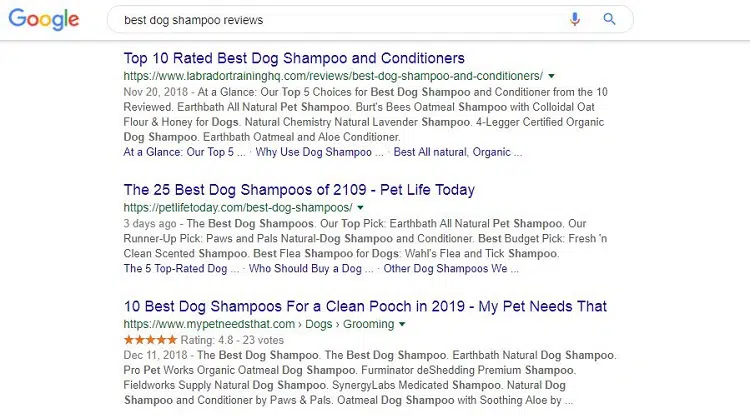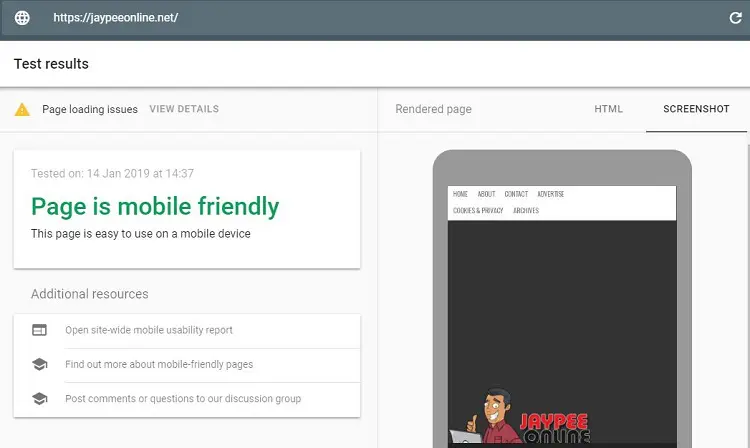Let’s make this clear: Google is and always will play an important role in the success of your website.
Whether you like it or not, if you’re not playing by Google rules, then you’re really setting yourself up for failure.
But how do you get to Google’s good side? With so many factors that can affect a website ranking, it’s hard for anyone (let alone a small business or entrepreneur) to really understand the way Google works.
That’s, until the release of Google’s Quality Rating Guidelines.
What’s that you ask?
Well, Google gives its team of content raters a guide for reviewing websites. It’s a huge technical guide that spans over 160+ pages. Of course, we recommend reading through it as it gives you an interesting insight into how Google perceives content on the web.
However, if you don’t feel like reading through the whole thing, we’ve skimmed it down to the 5 big takeaways that you need to know from Google’s quality rating guideline.
What Google Quality Rating Is Not
First thing’s first, let’s just make one thing clear:
These points will not guarantee you No.1 on Google’s ranking.
When it comes to getting a high search engine ranking, there are plenty of factors in play that’s not converted in the guideline.
Rather, think of the following takeaways as a good rule of thumb for a website if they want to improve their chances of getting ranked higher on Google.
Now that’s out of the way, let’s look at the big takeaways from the Google Quality Rating Guidelines.
The 5 Takeaways From Google Quality Rating Guidelines
Whether you’re a small business or a startup, it can be a bit overwhelming to try and implement everything that’s on the Google quality rating guidelines. And if you want to be ranked highly on Google, you have to play by their rules.
Of course, to do that, we’ve got some actionable tips that you can start using on your website and curate your content using Google’s standard.
1. Be Clear of Your Website’s Purpose and Focus
Every website needs to have a purpose and a focus. For Google, having a clear purpose and focus is very important if they want to be considered as a high-quality web page.
You see, when you have a website that’s designed with a clear purpose, it has a better chance if being presented as an answer to a user’s question. If your website is clearly about dog shampoos, then Google can easily pair your website to people who are looking for dog shampoos.
This website may look strange and pointless to you when you first landed. Well, according to the guideline, Google takes this page as helpful as it lets users post photos with mouths drawn on them.
So, what does that mean for you? That means going back to basics and be clear on what the purpose of your website is.
Ask yourself the following questions:
- What is it that your target audience want and need?
- How are your answering them with your pages?
- What’s to keep them coming back to your page?
- Is your website actually helping them what they want to do?
The better you understand your own website and its purpose, the easier it will be for you to improve your content and to better serve your users. This is what Google wants out of websites.
2. Put Quality Content Front and Center
“Content is king”
That’s been the saying ever since and based on the Google quality rating guideline, that continues to be true. And now, with the guideline, we know what it takes to be high-quality content.
Google loves it when all the information users need is in a single landing page. So users found what they want without needing to look elsewhere.
Look at the results from the Query “best dog shampoo reviews”. The top 3 results are those that give users all the information they need on a single page. But, in addition to that, your content also needs to achieve the following:
- Be updated regularly with new and relevant information
- Have it placed at the front and center of your web page
- Uses E-A-T (more on that below)
- Information and monetisation is balanced on your content
- Most importantly, be an original content that’s well-written, in-depth, and covers a topic in multiple angles
When you follow the points above, you’re making sure that the content you put is up to par with Google’s standard, thus ensuring a high rating from them. But also, you’ll be making content that your users will enjoy in the long run.
3. E-A-T Is Very Important
Sorry to disappoint but E-A-T has nothing to do with creating delicious food. Instead, E-A-T is an acronym for Expertise, Authoritativeness, Trustworthiness. It’s basically the main factors that Google uses to review the quality of a website’s content.
In a nutshell, trust is what E-A-T is all about.
When a user visits your website, can they trust it? Is the information on your website trustworthy? Most importantly, can their information be trusted with you?
A good About Me page can be your first step to gain your visitors’ trust. Building up and establishing your E-A-Ts will go a long way with improving your website for search engine ranking on Google. Some of the additional ways that you can about doing it is via:
- Having a Contact Us/Customer Page that lets users directly contact you.
- Interacting with your users on social media platforms (Twitter, Facebook, etc) to engage in social proof.
- Letting people know about your experience, expertise, and authoritativeness on topics that are relevant to your industry.
- Showcasing the credentials and the author’s bio of all your writers/guest bloggers/etc.
- If you’re lacking formal credentials, then always cite credible and reputable sources (ie. Statista, NPD group, etc.)
- Produce high quality and professional content.
With E-A-T, you’re trying to tell your users that they can trust the information on your website and that you know what you’re talking about.
4. Don’t Overlook The Importance of Content Creators
Recently, Google has updated its approach towards rating content. Prior to this, it didn’t matter who created the content, as long as the site that publishes it has a credible reputation.
Now, the author/content creator’s credibility is also considered an important factor when rating the quality of a website.
What does this mean for your website? It means that you can’t have faceless authors putting content on your website anymore. Well, you can, but Google will automatically rate your content as the “lowest” quality.
Author’s information such as their bio or their social media profiles should be set up on your website if they published any content for you. And setting up them is not that hard. Having a bio write-up with a picture or even a simple About.me page for your authors is more than enough to establish their online presence/credibility.
If you tend to have guest writers/bloggers contributing to your website, do a quick Google search on them before you post any of their content on your website. Check if the content that they’ve produced is good and whether it conflicts with Google’s guidelines.
5. Always Have A Mobile Compatible Site
A lot of people today are using their mobile devices to consume content online. Be it to shop, look at Instagram, or even to read websites, more and more people prefer using their mobile devices.
Which is why it’s still mind-blowing how so many small business and startups still haven’t optimized their websites for mobile devices.
Google knows that people are now using mobile devices more to do their searching. Which is why they consider mobile compatibility to be a huge factor in their rating. Websites that are not mobile compatibility or have mobile versions will automatically receive a poor rating from Google.
If you are not sure if your website is mobile friendly in Google’s eye, you can check it here.
Of course, keep the following factors in mind when designing your mobile website:
- What’s the readability of your site (how easy is it to side scroll and read your content)
- Can you easily navigate your website on a mobile device?
- Did you adjust/optimise the images for mobile viewing?
- Can you enter/add data easily? (Typing a comment, fill in a form, etc/)
- Is your mobile web page loading speed/performance optimised?
- Are there any mobile incompatible tech (ie. Flash) on your website?
Conversely, you can choose to use a mobile solution plugin for WordPress user or a mobile-responsive theme when you’re creating your website.
Bottom Line
Through the Google Quality Rating Guidelines, we’re able to get a glimpse of how Google’s algorithm works and how they perceive content.
For small businesses and website owners, it’s quite hard to digest all 160+ pages. It’s almost downright impossible to sum it up in a single article. But hopefully, you now have a better idea of what to do if you want to improve your website and rank higher on Google’s search engine.

















